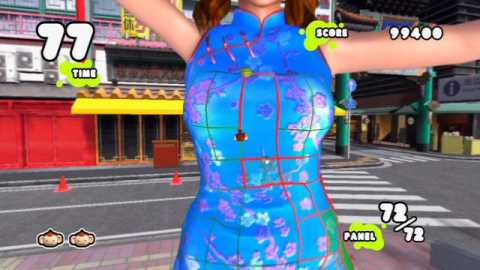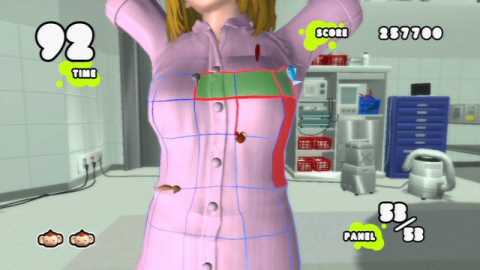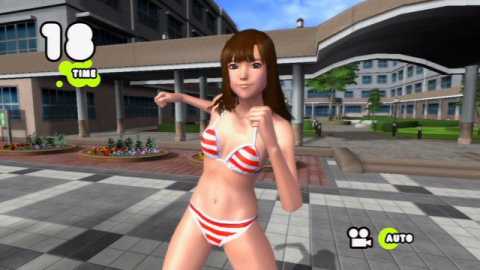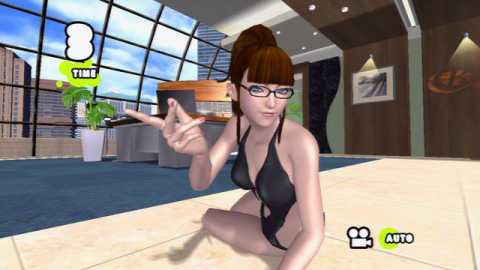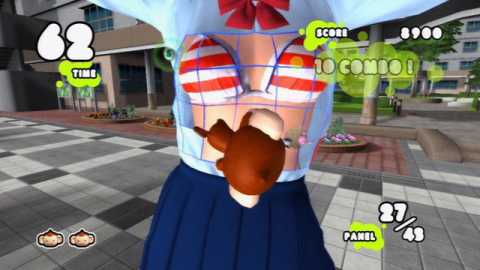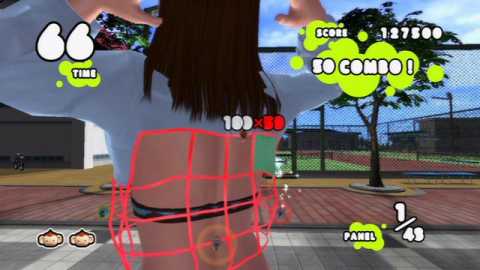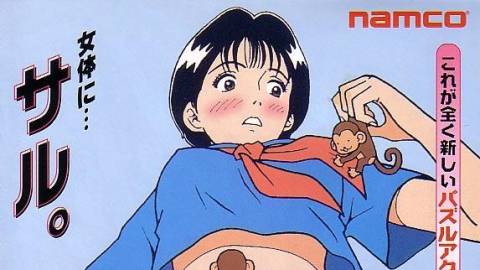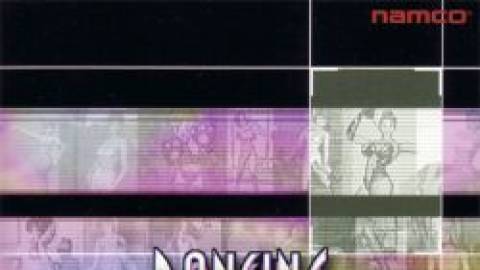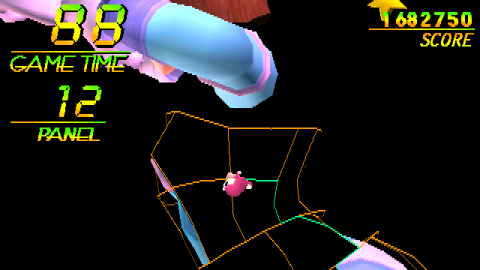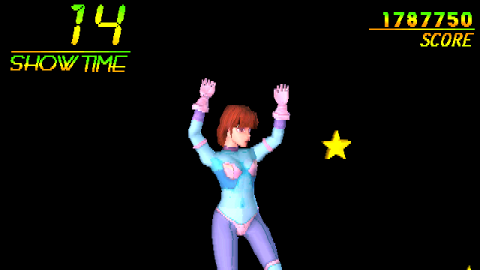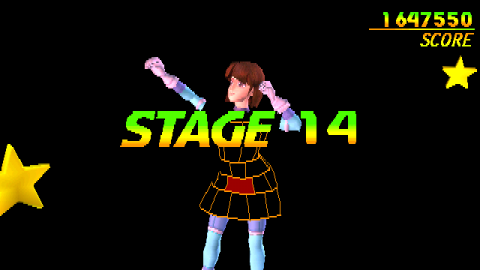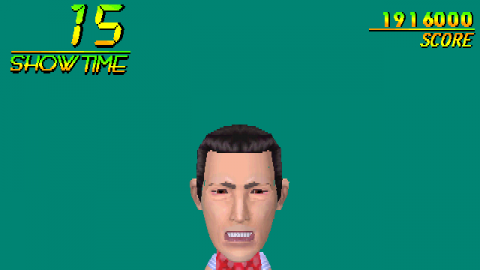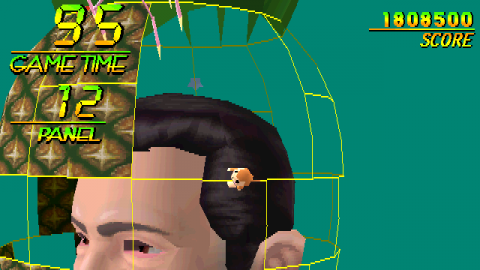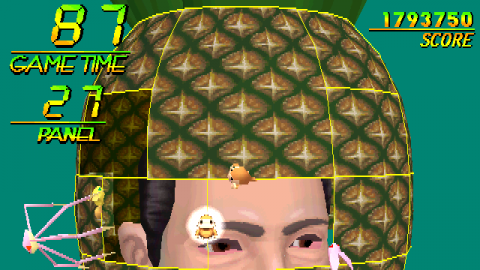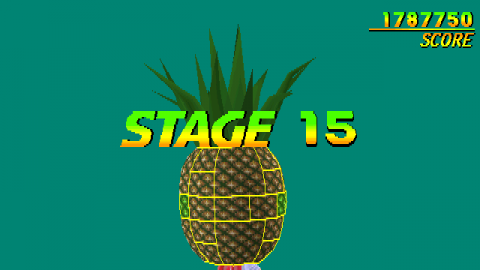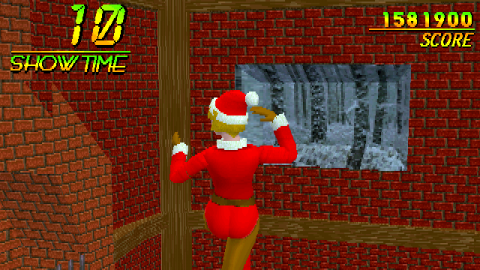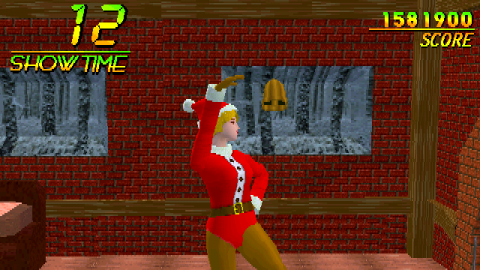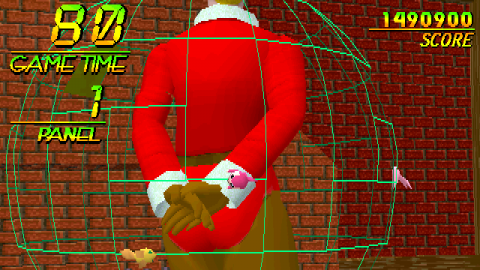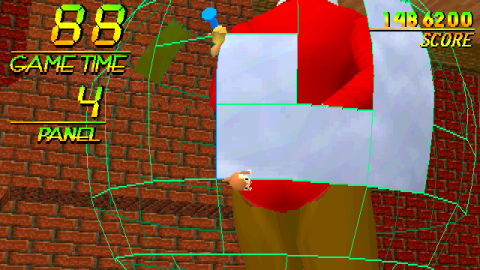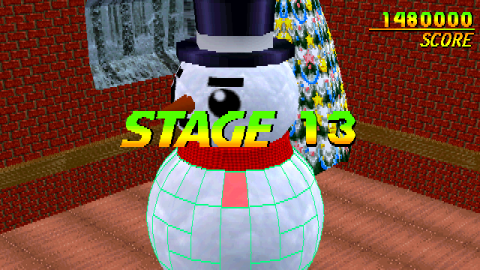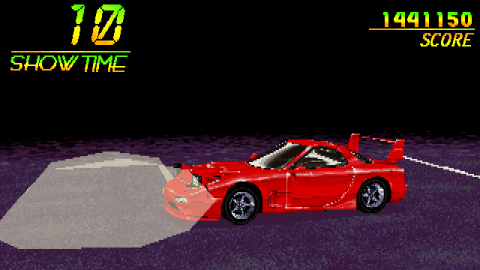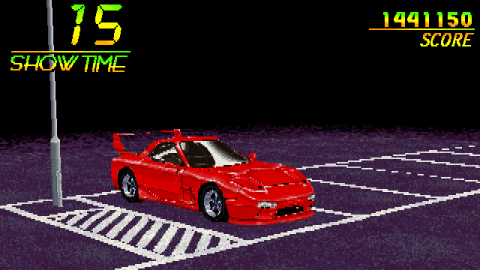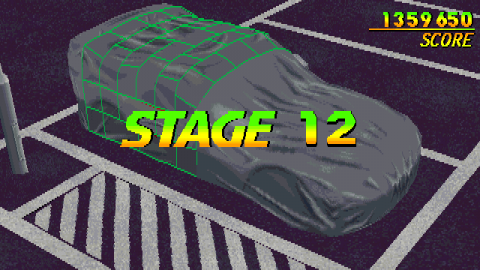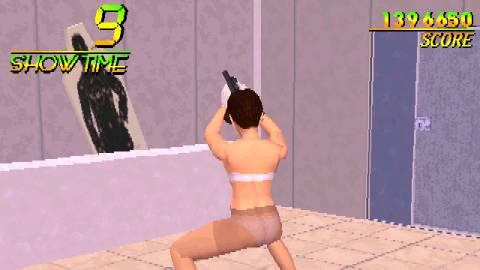Overview
Dancing Eyes (ダンシングアイ, Danshinguai) is an arcade game developed by Namco and released in Japan in 1996. It was conceived and directed by Masateru Umeda, director of The Outfoxies. In the game you control small monkey-like creatures in puzzles similar to Amidar and QIX in what can be seen as a fusion of these games and erotic strip-mahjong games. The game could be considered a 3D version of the game Gals Panic. Unlike the two-dimensional grids in aforementioned games however, Dancing Eyes' puzzles take place across a three-dimensional model. These are primarily the clothes of women, but can include barrels, shower curtains or cages.
While the game's System 11 arcade board was based on PlayStation hardware, it did not see a console release. However, in September 2010, the game was revealed as a future title for the PlayStation Move in a software line-up under a tentative title and a TBC release date. It was cancelled before resurfacing as part of the Namco collection that would have been released on the PSN. The game was the same as the original except with updated graphics, new girls to undress, Move support and online leaderboards. The game's rerelease was revealed through a comical video showing a monkey cutting fruit but not finding the same pleasure he has cutting clothing. It was originally scheduled for a 2012 release in Japan, but was once again cancelled by Namco.
Gameplay
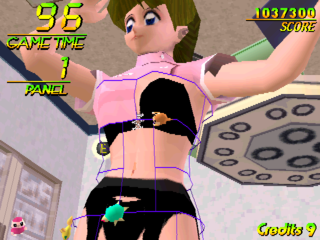
As mentioned, gameplay in Dancing Eyes is very reminiscent of Amidar and QIX style games. Each stage takes place on a certain object and the player is given a certain amount of panels that must be surrounded by a line left by the player so it can be destroyed. The player must constantly be on the lookout for enemies that will kill the player upon contact. Players cannot be too wreckless with their trails, as mouses will attach themselves to the trail and quickly catch up with the player. The player can loop around panels to secure their destruction even if killed, however. With each panel destroyed, more of the object underneath is revealed, almost always a woman in lingerie. After all panels have been destroyed, the player is treated to a 15 second "show time" with the model, where they may rotate around and zoom-in on the models as they pose.
Powerups
The game contains many powerups that can be used by the player. In each stage there are flashing panels that can be destroyed to reveal powerups. They can also be obtained by closing their trail with enemies following or inside the trail.
- Attack: The player grows to a large size and can crush enemies ala Pacman and can also move at a much greater pace.
- Destroy: Large chunks of the model are destroyed along with any enemies that are on the panels.
- Extend: Extends the game time.
- Extra Life: A glowing money head which grants the player an extra life.
- Paralyze: Any enemy that attaches themselves to a trail of the player will be paralyzed.
- Reverse: All panels remaining will be swapped with ones destroyed and vice versa. This can have a greatly negative effect if used when few panels remain.
- Speed Up: The player's movement speed is increased.
- Time-Stop: The enemies are stopped for a short period of time.
- Wide-Attack: When panels are cleared, any panel nearby will also be destroyed.
- X-Attack: Like the previous powerup, but is limited to the X-Axis.
- Y-Attack: Again, but for the Y-Axis.
Models
Dancing Eyes' main attraction is the models that the player effectively 'strips'. Each stage contains 3 models that the player may choose between, except for the final level which consist of 2 models in succession. Many of these are women, but some are more bizarre 'fan disservice' such as hideous aliens, cows or body-builders. There is a 'Kids' setting in the service menu which will remove all suggestive levels from the game.
Soundtrack
A soundtrack, Dancing Eyes Arcade Soundtrack 013, composed by a team of Namco engineers was released by Pony Canyon in March 18, 1998 in Japan. It contains all music from the arcade.
Cancelled PSN Revival
In 2011 Namco announced a remake of the game as part of its Namco Generations series would be released exclusively on the PlayStation Network for PS3, but was cancelled a year later.

 Arcade
Arcade